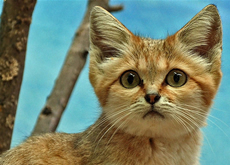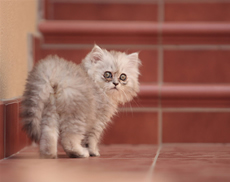maintain for up to three minutes without stopping.
Bothersome as it is to us, it serves the obvious purpose of letting the tomcats know she is available. (And remember that the tomcats’ ears are much more sensitive than ours, which explains why toms sometimes travel a long distance to locate the amorous female.) While the howling is going on, the female is likely to roll on the floor, which, if a tom is in sight, is another sign that she is sexually receptive. In short, she is making a perfect spectacle of herself—and the tomcats love it.
Bothersome as it is to us, it serves the obvious purpose of letting the tomcats know she is available. (And remember that the tomcats’ ears are much more sensitive than ours, which explains why toms sometimes travel a long distance to locate the amorous female.) While the howling is going on, the female is likely to roll on the floor, which, if a tom is in sight, is another sign that she is sexually receptive. In short, she is making a perfect spectacle of herself—and the tomcats love it.

















































